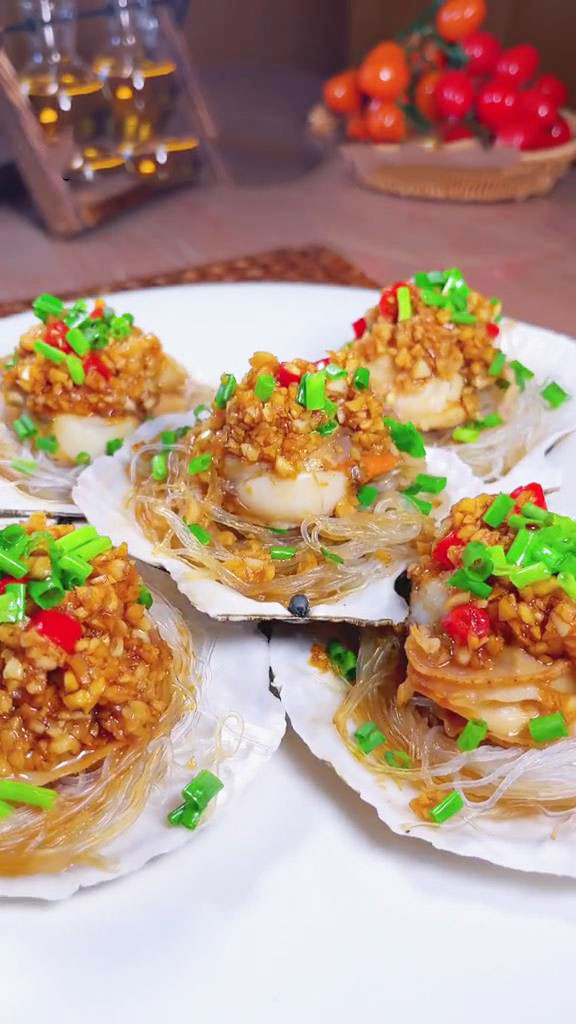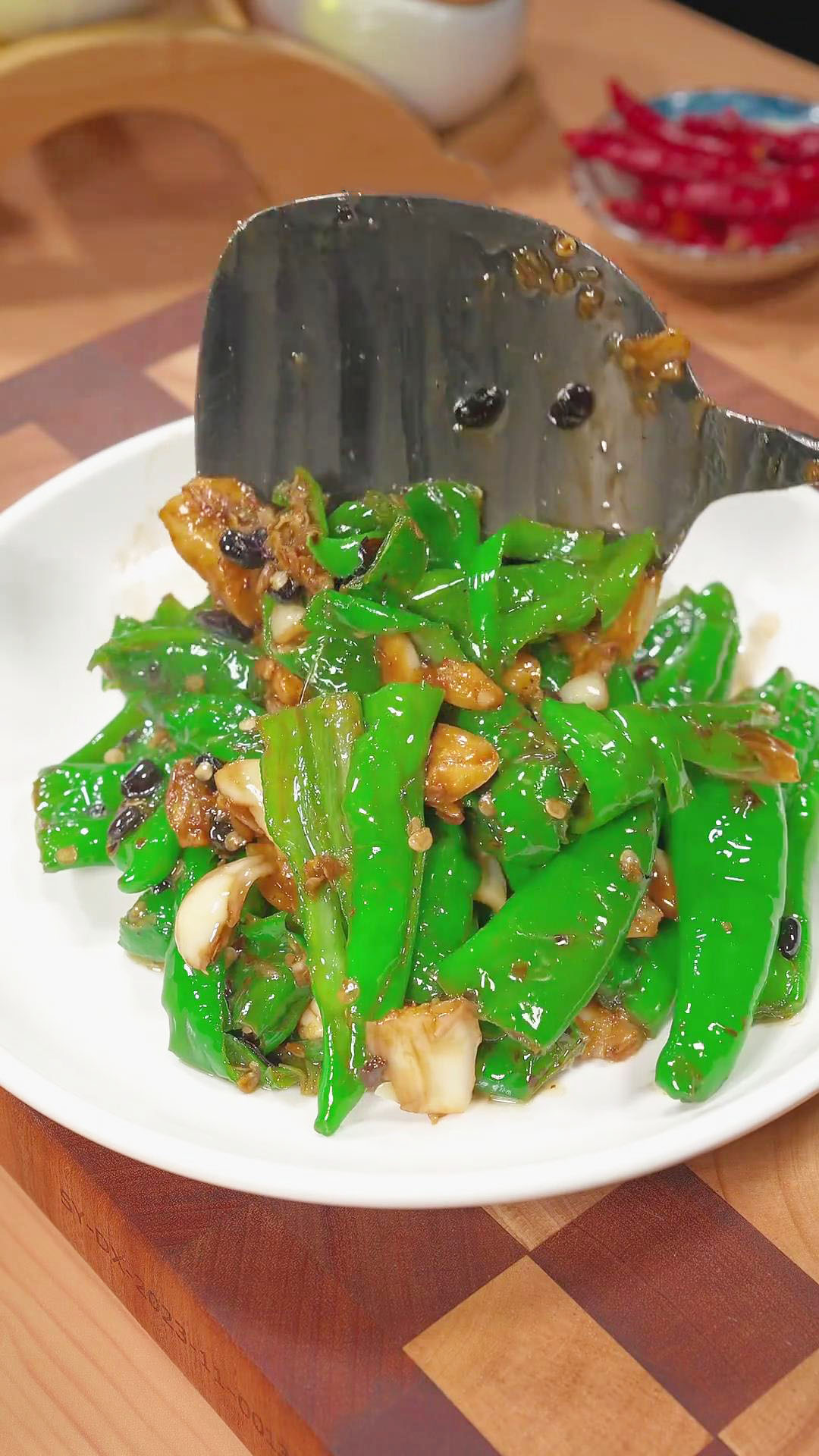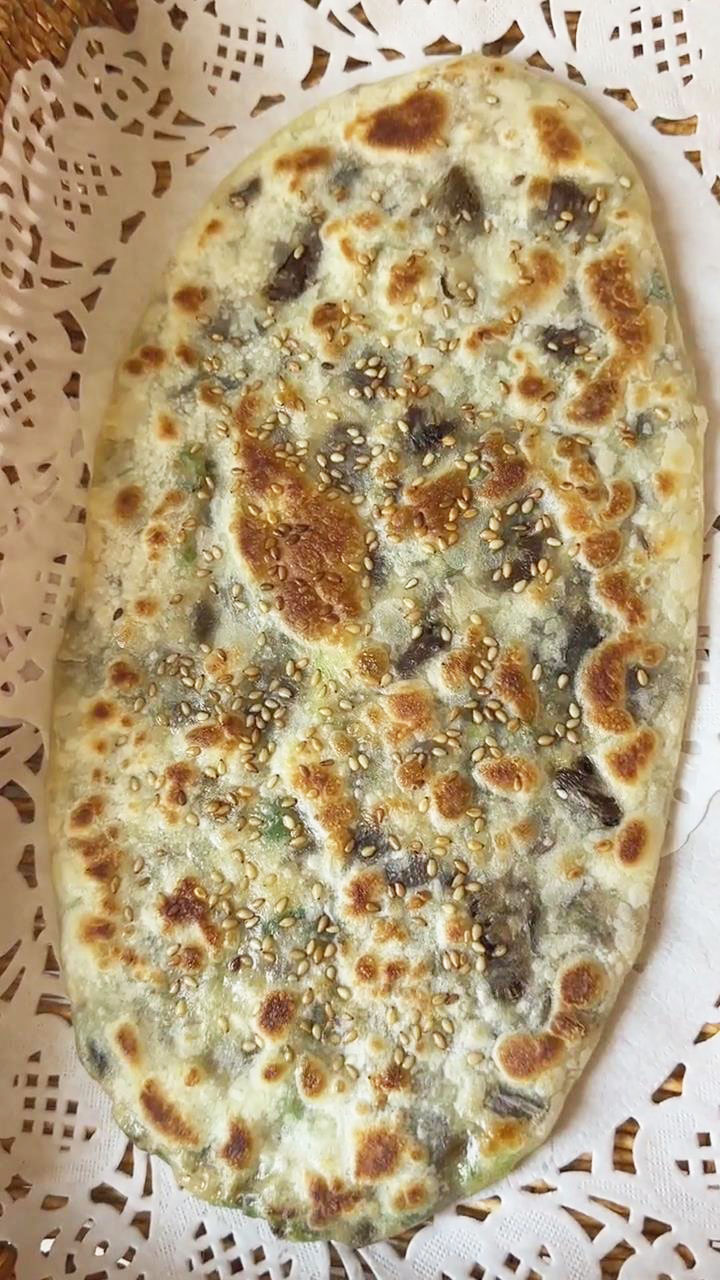Chinese Lunar New Year won’t be complete without Nian Gao or Chinese New Year rice cake. It is made from glutinous rice flour, cornstarch, and wheat starch, giving you a soft and sticky treat. This recipe also uses brown sugar, ginger, and coconut milk for a sweet and creamy taste!
What Is Chinese New Year Rice Cake?
Chinese New Year rice cake is popularly known as Nian Gao (年糕), which directly translates to “year cake” and is a homonym for “higher year”. It has been a long tradition to eat Nian Gao to have a prosperous year ahead. Thus, it is also common to give Nian Gao as a gift for Chinese New Year to wish them good luck for growth and prosperity. Another version you may find is stir-fried rice cake, Chao Nian Gao.
Although it is a Chinese New Year treat, this is also traditionally eaten during the Dragon Boat Festival which is celebrated on the 5th day of the 5th month of the Chinese calendar. The special ingredient of Nian Gao is the glutinous rice flour. It gives the cake a lovely sticky, stretchy, chewy, and soft consistency.
When it comes to making Nian Gao, you start by mixing the glutinous rice flour, cornstarch, and wheat starch in a separate bowl. Then, the brown sugar slabs and ginger are cooked in water until the sugar melts. Afterward, the wet and dry mixtures are combined and then mixed with coconut milk.
You don’t need to bake this, only steam until it solidifies. Nian Gao can be served in different ways, such as cutting it into slices and eating it on its own or pan-frying it with oil for a crunchier outer layer. For more traditional treats, here are some desserts to make:
- Thai Mango Sticky Rice Dessert (Vegan + Gluten-Free)
- Pandan Coconut Jelly
- Grass Jelly Recipe (Dessert With Drink)
- Sweet Chinese Black Sesame Dessert Soup (芝麻糊)
- Taro Sago (Tapioca) Dessert Soup
- Mango Coconut Milk Pudding Dessert
- Snow Fungus Dessert Soup (Tong Sui)
- Peach Gum Dessert (Tong Sui)
- Sesame Balls Recipe (Jiandui)
Ingredient Alternatives And Recommendations
Here are my top ingredient alternatives and recommendations to consider:
- Glutinous rice flour: I do not recommend replacing glutinous rice flour since it is the only flour that can give you the desired sticky texture. Keep in mind this is not the same as rice flour since rice flour is made from milled long or medium-grain white rice, such as japonica, sinandomeng, angelica, or indica, to name a few. On the other hand, glutinous rice flour is made from glutinous rice, also known as sticky rice.
- Cornstarch: Adding cornstarch is going to add a thick and chewy consistency. It also helps create a more balanced result when combined with glutinous rice flour. If you don’t have cornstarch, you can substitute it with the following and adjust the amount accordingly:
- All-Purpose Flour (1:1 ratio)
- Arrowroot Powder (1:1 ratio)
- Tapioca Starch/Flour (1:1 ratio)
- Potato Starch (1:1 ratio)
- Rice Flour (1:1 ratio)
- Wheat starch: Wheat starch is available in Chinese or Asian grocery stores. Keep in mind this is not the same as wheat flour or regular flour. It is actually a more refined form of wheat flour which is more preferred as a thickener than cornstarch. You can replace it with more cornstarch, potato starch, or tapioca starch, but the texture may become slightly different.
- Brown sugar slabs: Brown sugar slabs are blocks of sugar that are commonly found in Asian grocery stores. Not only does it sweeten the rice cake, but it also adds a deep brown color. If you don’t have brown sugar slabs, you can replace them with regular brown sugar. You can also use cane sugar, muscovado, or coconut sugar, but the color of the cake won’t be as dark as brown sugar slabs. Another alternative would be white sugar, but you will have to add an extra coloring ingredient to still give it a nice brown color.
- Ginger: If you want to enhance the flavor, add ginger slices as you melt the brown sugar slabs with water. You can also use ground ginger and adjust the amount according to your preference. Ginger adds a warming kick and a peppery taste to the rice cake.
- Coconut Milk: The rice cake gets its creamy and rich coconut taste from the coconut milk. Coconut cream is the closest alternative for a coconut-rich taste. You can also use other plant-based milk, such as soy, oat, and almond. To add a coconut taste to non-coconut milk, I recommend adding coconut flakes, shredded coconut, or coconut flavoring to the batter to retain the cake’s coconut flavor.
- Optional for color: Although brown sugar slabs are enough to give the rice cake a brown color, you can add an optional coloring ingredient if you want to make the color even deeper. Use a small amount of kansui (梘水) or lye water, about 1/2 to 1 teaspoon to deepen the color. You can buy kansui in Asian grocery stores or online markets like Amazon. Aside from kansui, molasses also helps deepen the color. Its thick and dark consistency adds a brown color to the rice cake.
Tips to Follow When Making Chinese New Year Rice Cake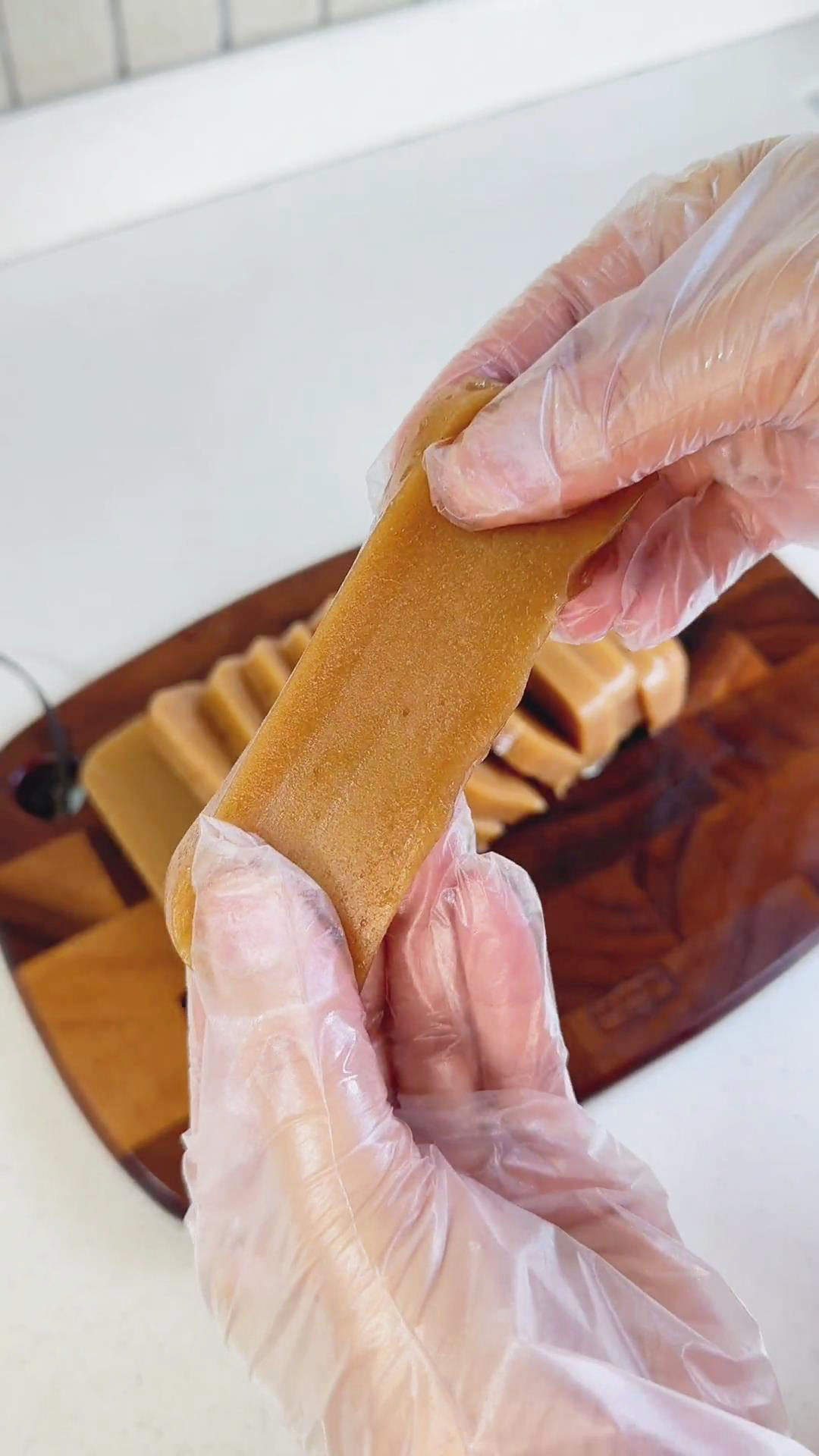
Making Chinese New Year rice cake is quite simple since it only requires basic steps, such as mixing and steaming. However, there are a few things that can affect the results of the rice cake.
So, I listed several tips to follow for the mixing and steaming steps. Moreover, I also share serving and storage suggestions.
- Achieve an even texture:
- There are a couple of factors that can make the texture uneven when steamed. For instance, steaming the rice cake at a very high heat for too long will cause it to boil eventually and form bubbles as it hardens. When the rice cake hardens, it takes the shape of a bubbly surface instead of a smooth flat top. So, make sure to heat it at medium-low heat or on high heat but without overcooking it.
- Another factor that causes a bubble texture is overmixing the batter. Overmixing creates air bubbles in the batter, which can create holes when steamed. The air bubbles formed will also cause it to pop during the steaming step, eventually making the wrinkly uneven surface.
- An excellent way to smoothen out the batter and remove clumps or air bubbles is through sieving. Pour the batter through a sieve before placing it in the mold for steaming.
- Make sure water doesn‘t spill on the rice cake:
- Water spilling on top of the batter affects the overall texture. This can happen when you open the lid of the steamer and water drips on top. So, make sure you are extra careful when opening the lid after steaming. Using a bamboo steamer is also an excellent way to prevent water from dripping since its bamboo material absorbs moisture already.
- Another way water can reach the rice cake batter is when the steamer is filled with too much water. So, make sure to fill it with the right amount of water that won’t reach the batter when it starts to boil.
- Steam until the rice cake is cooked correctly:
- Steaming time may vary, depending on how much batter you used or the size of the mold. If you are unsure if the rice cake is ready, I recommend using the toothpick test. All you have to do is insert a toothpick and check if the toothpick comes out clean. If not, then the rice cake still needs more time to steam until no residue is left in the toothpick when tested again.
- Keep in mind that steaming time may be longer if the size of your mold is big or larger in height. On the other hand, if the mold is thinner or shorter, it may steam faster.
- If you don’t have a steamer, you can still steam without a steamer in 5 ways: pan with steamer rack, microwave, pan with sieve, rice cooker, and instant pot.
- Use a kitchen weighing scale:
- I like to use a kitchen weighing scale to ensure a more accurate measurement of the ingredients. Sometimes, the slightest inaccuracy in measurement can affect the taste and texture. Use a manual or digital kitchen scale to help you achieve accurate measurements.
- Serving suggestions:
- Since it is a whole block, it is best to cut it into 1cm thick rectangular slices to make it into smaller pieces.
- You can pan-fry both sides with oil to have a crispy outer layer while you enjoy its chewy and sticky center.
- If you like to add an eggy taste, coat the rice cake slices with beaten eggs and fry in the pan. This gives you an extra layer of soft crunch.
- Storage suggestions:
- You can keep it in the fridge for about 1 month in an airtight container.
- For pan-fried rice cakes, I recommend consuming it while freshly cooked to enjoy its crispy texture. If you need to store and reheat pan-fried rice cake slices, it is best to reheat it in the pan to revive its crispy outer layer.
What You Need To Make Chinese New Year Rice Cake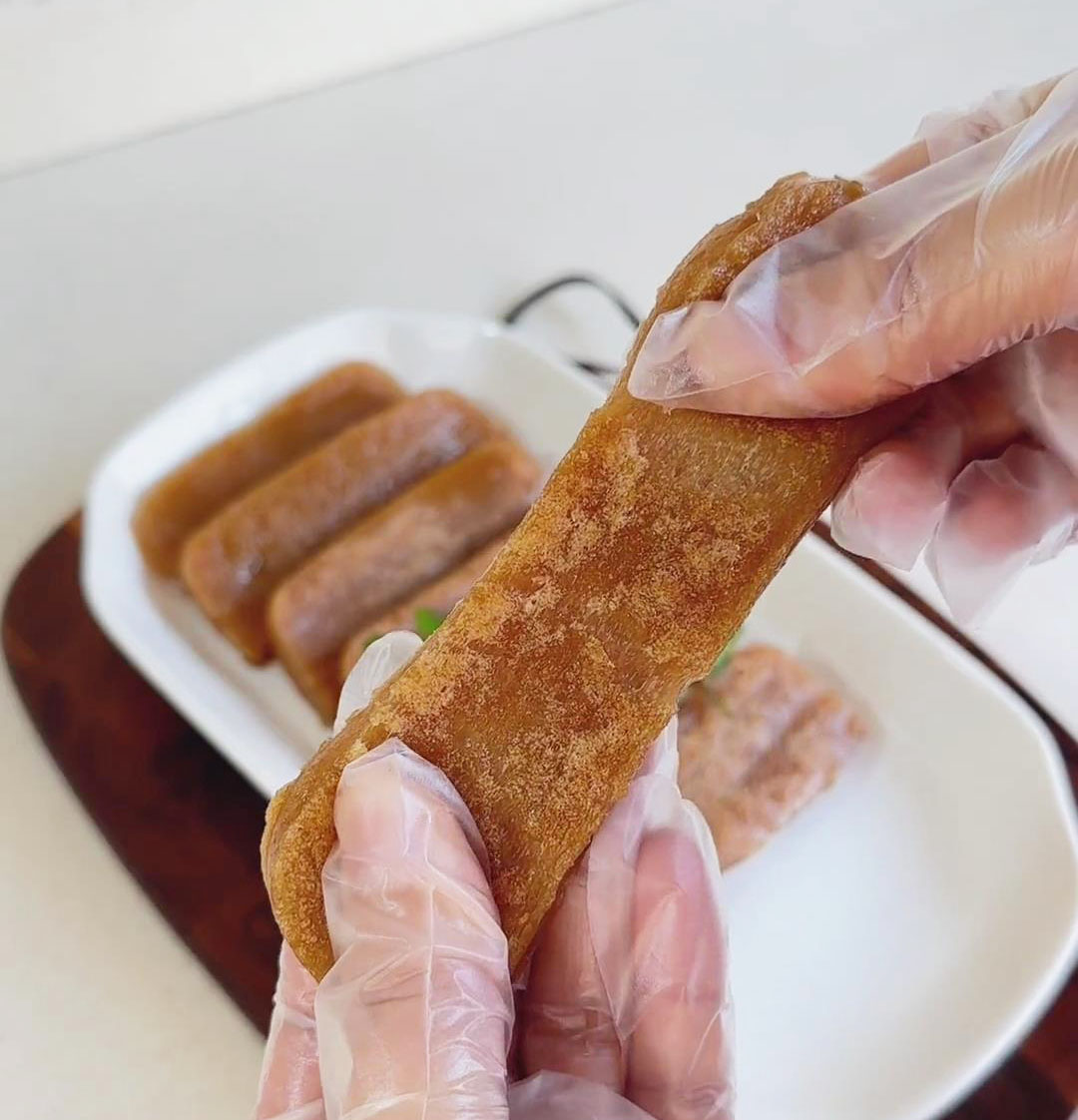
To make Nian Gao, prepare 2 mixing bowls for the dry and wet batter and a whisk for mixing. I recommend using a non-stick pan for pan-frying the rice cake slices easily without sticking and for steaming the mixture (or any steaming appliance). Other useful kitchen tools to prepare are a sieve and your chosen rice cake mold.
I recommend a rectangular heat-resistant container if you want to create rectangular rice cake slices. The ingredients to prepare are the following:
- 300g of glutinous rice flour
- 100g of cornstarch
- 100g of wheat starch
- 400g of water
- 200g of brown sugar
- 3 ginger slices (to taste)
- 100g of coconut milk
How To Make Chinese New Year Rice Cake
The recipe takes about an hour to finish. Simply mix the dry and wet batter, steam the mixture, and slice it into rectangular rice cakes. Watch my 40-second tutorial guide on Instagram or TikTok to check out the steps and ingredients I used.
- Make the dry mixture. Mix glutinous rice flour, corn starch, and wheat starch thoroughly.
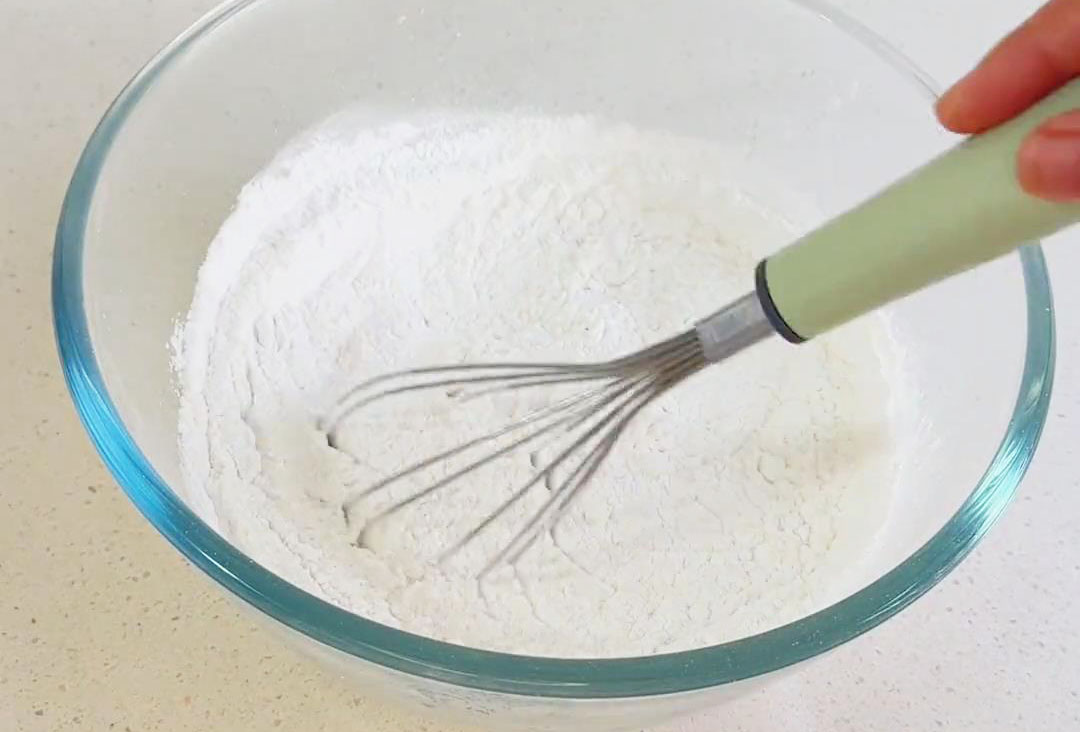
- Make the wet mixture. In a non-stick pot, melt the brown sugar slabs in water with 3 slices of ginger and stir continuously. Wait for the mixture to boil and fully melt the sugar.
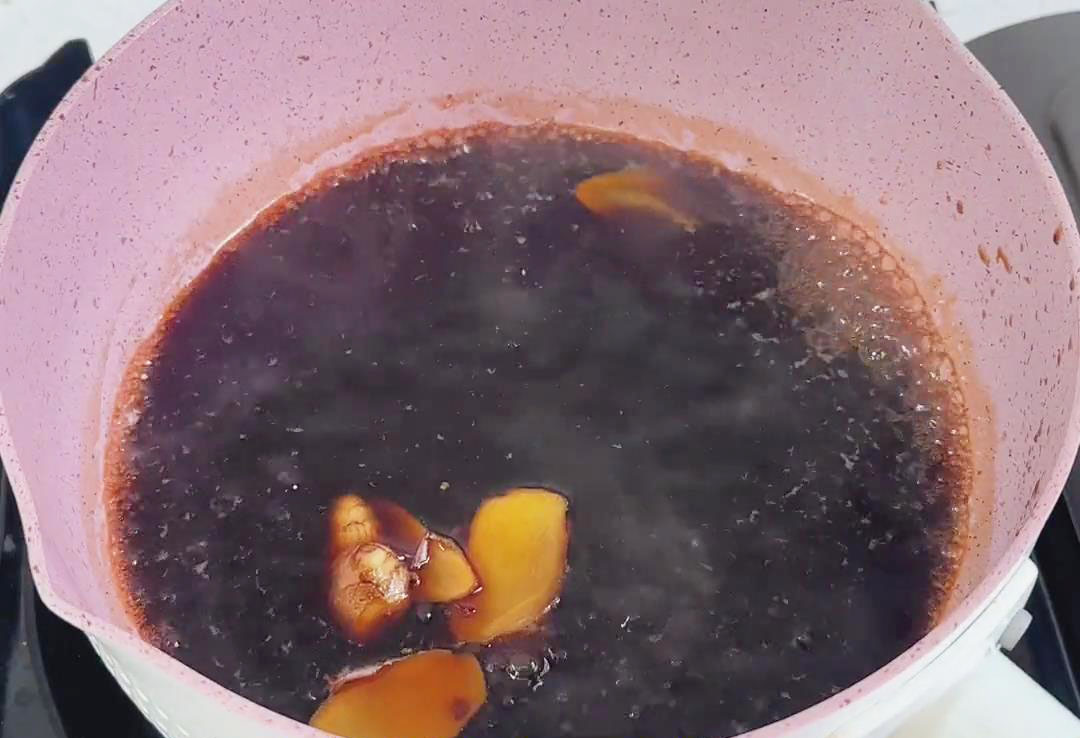
- Afterward, let it sit for about 3 minutes and pour it into the dry mixture. Stir using a whisk until there are no clumps.
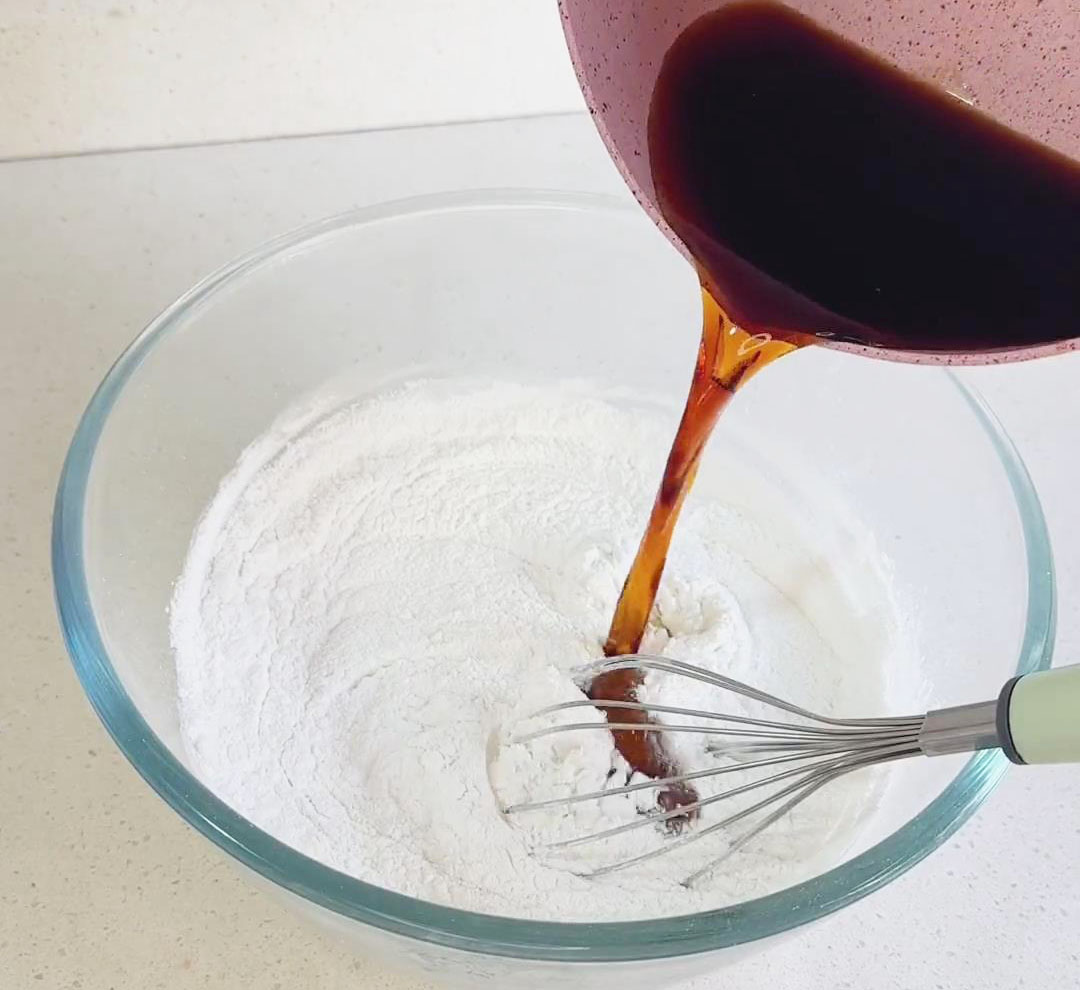
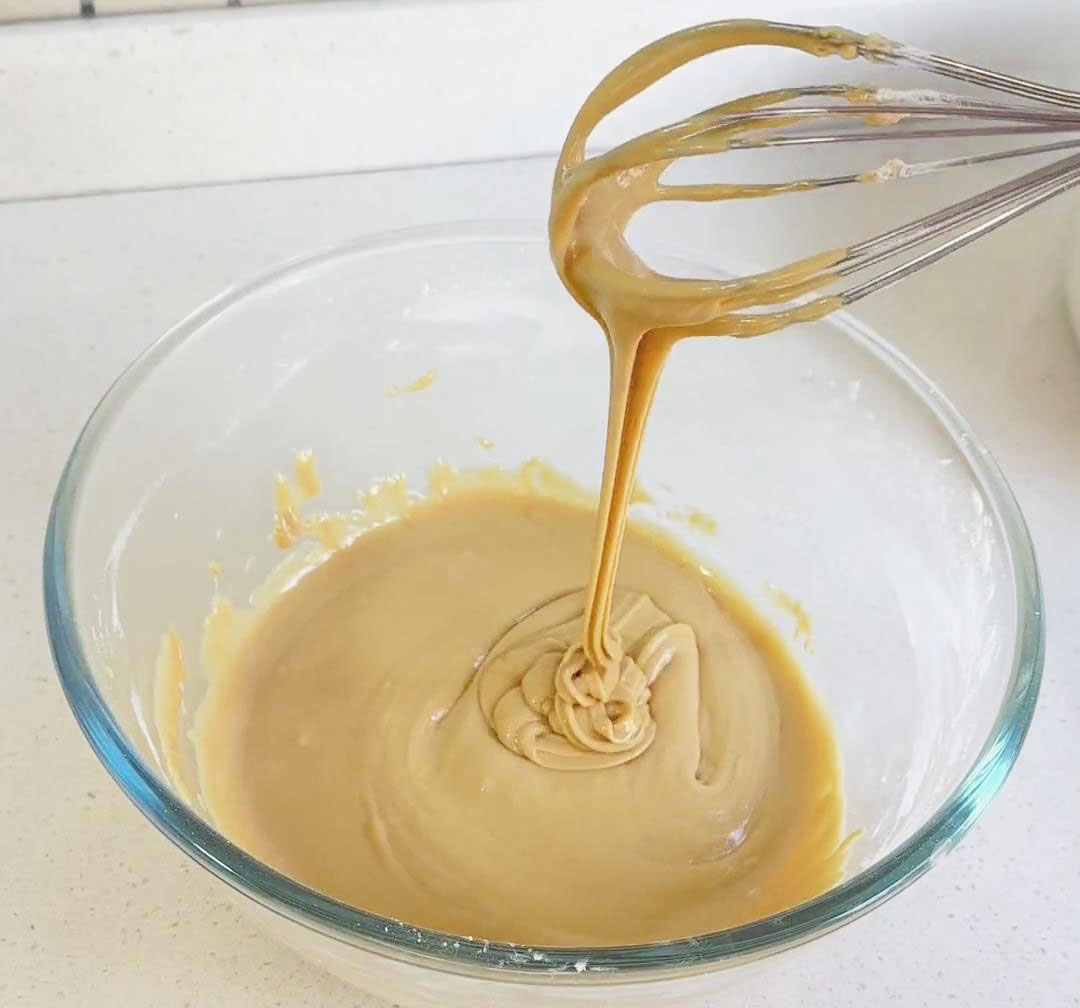
- Then, add the coconut milk and continue stirring until smooth.
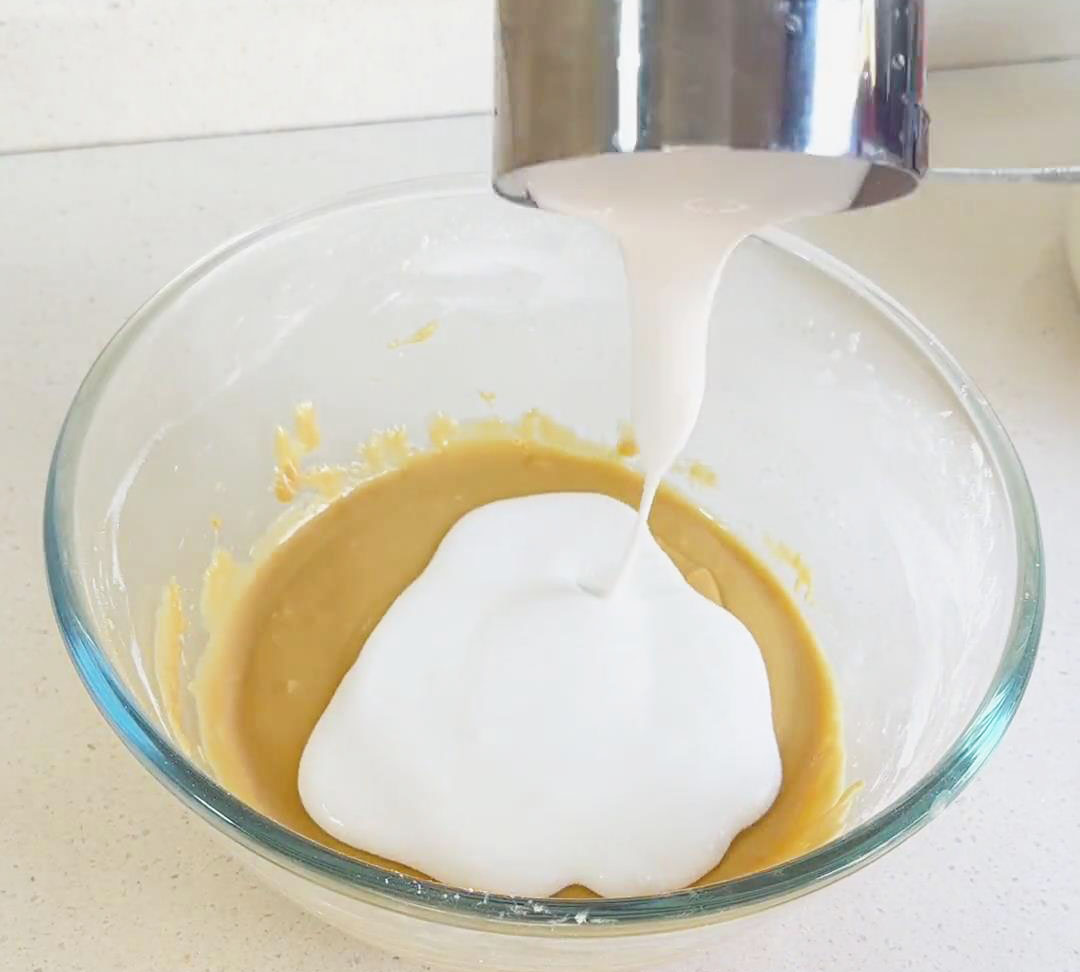
- Remove large particles by pouring the mixture through a sieve.
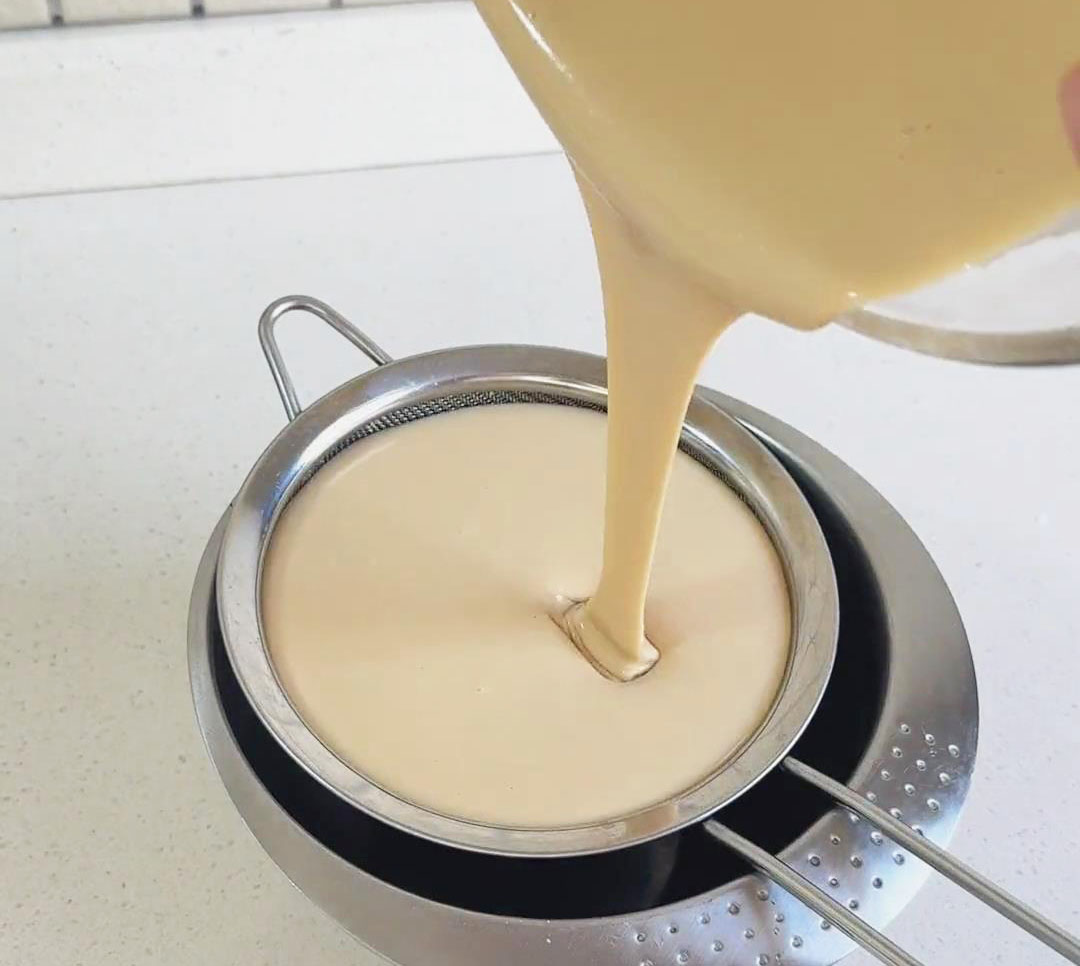
- Brush your chosen mold with oil and pour in the mixture.
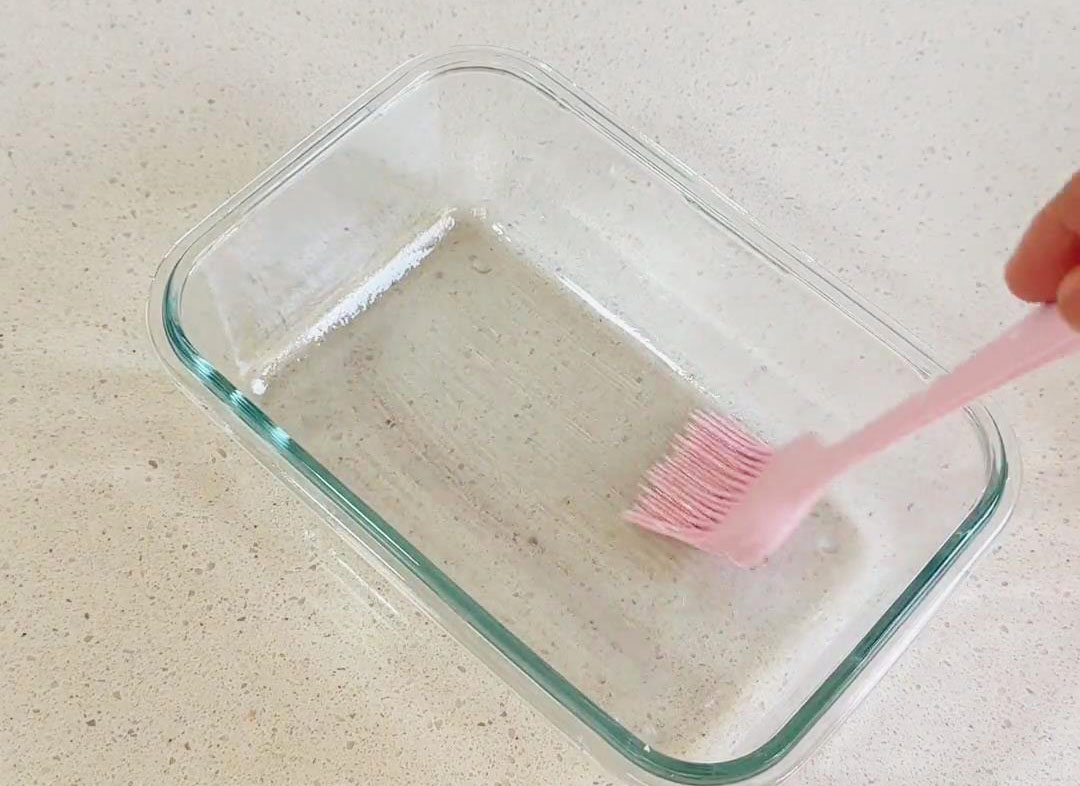
- Prepare your steamer with water, place the rice cake mold, and cover.
- Steam for 40 minutes on high heat.
- Carefully lift the lid. Once the rice cake is ready, let it cool and cut into 1cm thick rectangular slices.

- For a crispy texture, fry the rice cake on a non-stick pan until crispy on both sides.
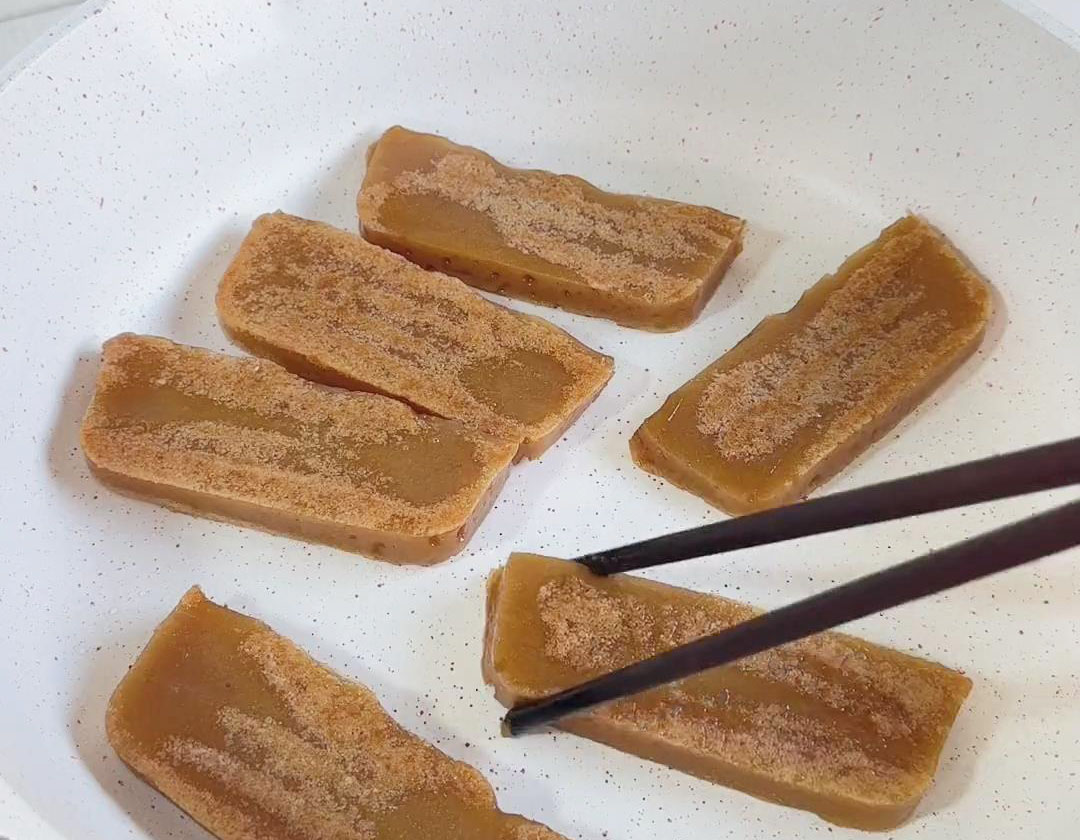
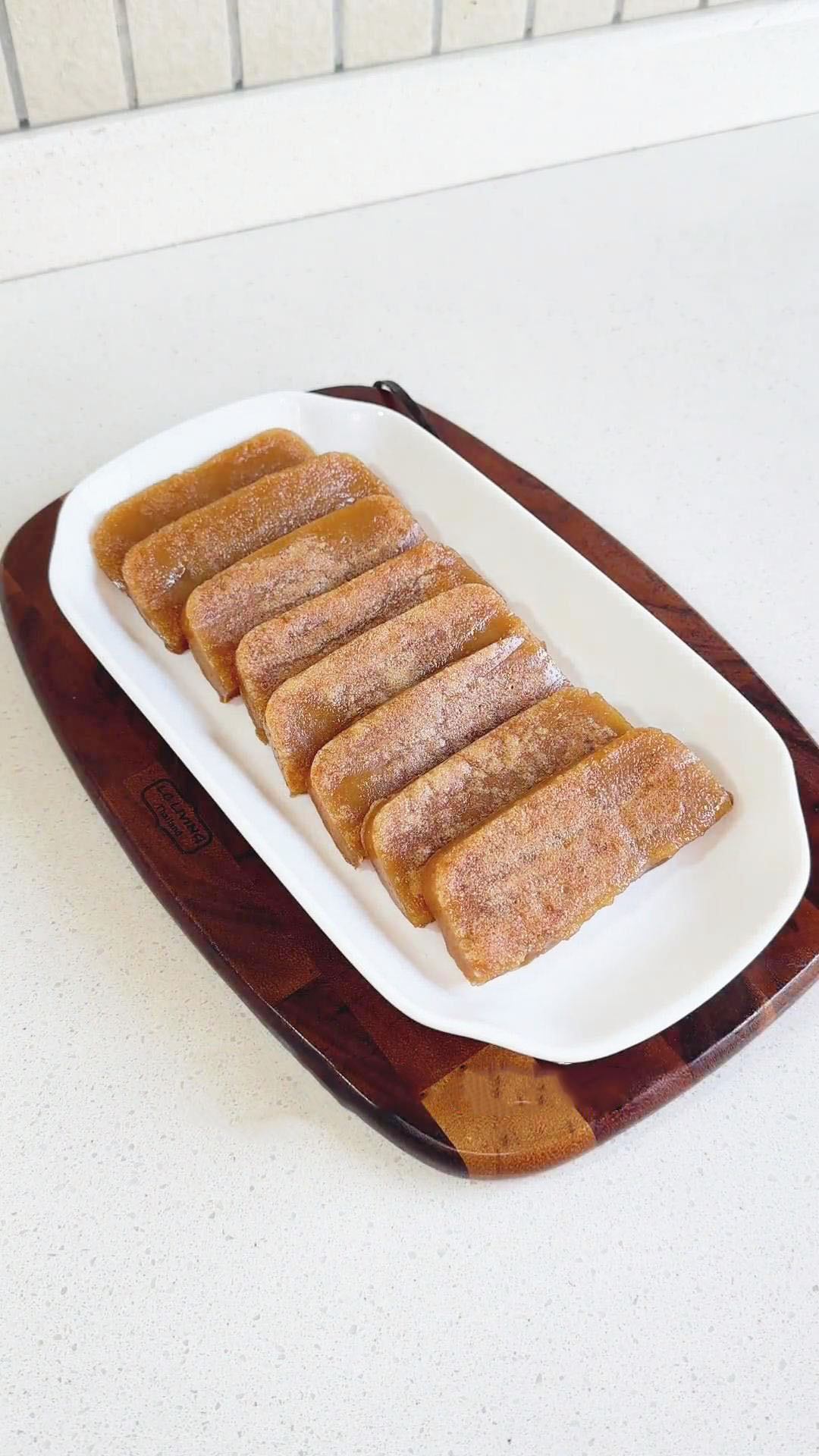
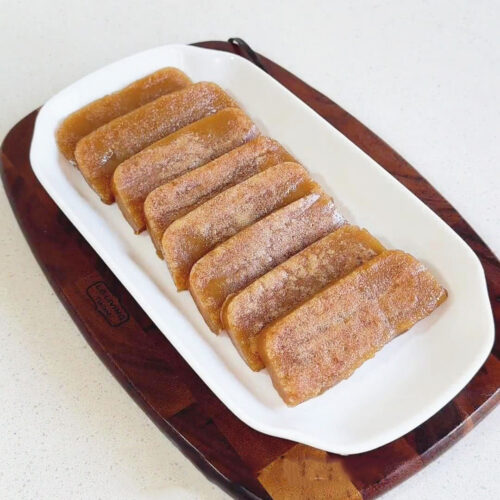
Nian Gao (Chinese New Year Rice Cake)
Ingredients
- 300 g of glutinous rice flour
- 100 g of cornstarch
- 100 g of wheat starch
- 400 g of water
- 200 g of brown sugar
- 3 ginger slices to taste
- 100 g of coconut milk
Instructions
- Make the dry mixture. Mix glutinous rice flour, corn starch, and wheat starch thoroughly.
- Make the wet mixture. In a non-stick pot, melt the brown sugar slabs in water with 3 slices of ginger and stir continuously. Wait for the mixture to boil and fully melt the sugar.
- Afterward, let it sit for about 3 minutes and pour it into the dry mixture. Stir using a whisk until there are no clumps.
- Then, add the coconut milk and continue stirring until smooth.
- Remove large particles by pouring the mixture through a sieve.
- Brush your chosen mold with oil and pour in the mixture.
- Prepare your steamer with water, place the rice cake mold, and cover.
- Steam for 40 minutes on high heat.
- Carefully lift the lid. Once the rice cake is ready, let it cool and cut into 1cm thick rectangular slices.
- For a crispy texture, fry the rice cake on a non-stick pan until crispy on both sides.

